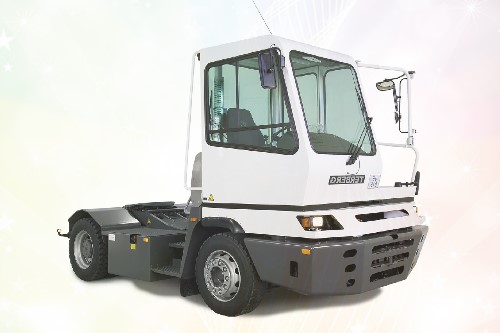Terberg Yard Trucks: owner’s, service and maintenance manuals, error codes list, DTC, spare parts manuals & catalogues, wiring diagrams, schematics free download PDF
| Title | File Size | Download Links |
| Terberg Alison 3000 / 4000 Manual [PDF] | 3.9Mb | Download |
| Terberg Control Systems Operation Manual [PDF] | 1.5Mb | Download |
| Terberg RT Brochure [PDF] | 1.6Mb | Download |
| Terberg TD1441-01 Fault Codes List [PDF] | 573.1kb | Download |
| Terberg TD1474-07E DIM User Manual [PDF] | 2.2Mb | Download |
| Terberg TT RT 182 / 223 / 283 / 323 Manual [PDF] | 9.6Mb | Download |
| Terberg TT-RT Series Service Manual – Hydraulic System [PDF] | 23.6kb | Download |
| Terberg Yard Tractors YT-Series [PDF] | 1.3Mb | Download |
| Terberg YT 182 / 222 / 282 Terminal Trucks [PDF] | 9.8Mb | Download |
| Terberg YT 182, 4×2 Technical Specifications [PDF] | 3.9Mb | Download |
| Terberg YT xx2 Series Service Manual – Hydraulic System [PDF] | 553.5kb | Download |
| Terberg YT-DT-TT-RT-BC-RR Maintenance Manual [PDF] | 22.7kb | Download |
| Terberg YT182-222 / Yard Tractor, BC 182 / Body-Carrier Electrical Wiring Diagrams [PDF] | 842.8kb | Download |
Terberg Truck Manual PDF
The profile of the Dutch business Terberg includes unique multi-axle trucks, RO-RO tractors, terminal tractors, and specific equipment. A small repair business for military equipment remained in Europe after the Second World War marked the beginning of its history in 1948. The Terberg family business created some of the first specialized port equipment when multi-ton ferry transportation by sea and the name “RO-RO” emerged in the late 1970s and early 1980s.
The firm not only invented the first unique port tractors and tractors, but also continues to be the biggest producer of this type of equipment in Europe, turning out up to 100 trucks and 600 terminal tractors annually, with RO-RO tractors accounting for the majority of them.
The company’s port goods may be separated into two major categories: terminal tractors and RO-RO tractors (RT series) (YT series – formerly TT). Each of these groupings is further separated into a few subgroups based on the overall mass of the road trains; all RO-RO tractors have all-wheel drive and have a carrying capacity (g/n) of either 120 tons or 230 tons. Terminal tractors are classified into two categories based on the height of the fifth wheel from the road (921 and 938 mm), with a gross weight of up to 80 tons, and only have rear-wheel drive (i.e., a 4×2 wheel arrangement). True, the recently developed four-axle vehicle (8×4), which can function as both a terminal tractor intended to haul big containers as well as a RO-RO tractor with a gross train weight of up to 350 tons, broke this harmonic categorisation. The wheels of the back pair of Axletech axles propel it. Depending on the needs of the customer and the particular pier where the tractor will have to work in the future, tractors might have either a right or left cab.
All RO-RO versions have hydraulically changing cabs for simple manoeuvrability in confined locations and cargo handling oversight. Its rear entry, as well as the driver’s seat’s instrument panel and controls, can be turned 180 degrees. The cab tilts forward 65° to provide access to the engine for maintenance. Most cars use Cummins 6STAA engines, which range in power from 173 to 420 hp. These engines are combined with hydromechanical (ZF AS-tronic) or manual gearboxes (KP), and a small joystick is used to change the gears.
In terms of appearance, RO-RO model groups vary in terms of bumper width, seat height, and, most obviously, wheel sizes (tires 11R22.5). The RT series tractors include pneumatic axle suspensions, which offer the driver a high level of comfort, structural compactness, and good dependability. Recently, the business improved their job by utilizing the patented Safeneck complex, which enables you to adjust the tractor’s subframe’s location in relation to the center of gravity while redistributing loads across bumps in the road.
The carrier, a spatial frame on which the engine, gearbox, axles, and subframe with a fifth wheel are mounted, is the structural foundation of the tractor. A cabin has been installed there. The heavy-duty and light-duty variants’ designs are so similar that even their bases, which measure 3660 mm, are the same. Only a few variations of the terminal tractors have stayed the same in the most recent samples, while all RO-RO tractors have already changed look. Although some people think that this sort of technology does not require the expertise of designers, the new cab and base have a more beautiful appearance.
The family of terminal tractors has several more variants. There are multiple bases of various sizes, in addition to the primary ones (truck tractors), for carrying items like 7.5-meter containers, rolling containers, lengthy lengths, as well as for truck bodies or vans with “self-loading.” For particular piers, some variations even include extra axles with train wheels.
Terminal tractors structurally differ a little from RO-RO tractors. The (old) cab’s entry is on the side, and the driver may only sit in one direction: forward. The same firms provide the engines and transmissions, while Volvo provides the front axles. Of course, such unification makes items considerably cheaper for both the maker and the consumer and substantially streamlines manufacturing. Entrepreneurial businessmen purchase these incredibly dependable tractors for use as city vehicles and for factory work in “hot” shops, where they “feel” fantastic.
Nearly 80 (!) different nations throughout the world are recipients of Terberg goods. Despite the fact that there are other terminal tractor producers in Europe, its equipment is highly prized even on the secondary market because of its excellent craftsmanship and somewhat unique design.

Terberg YT182
